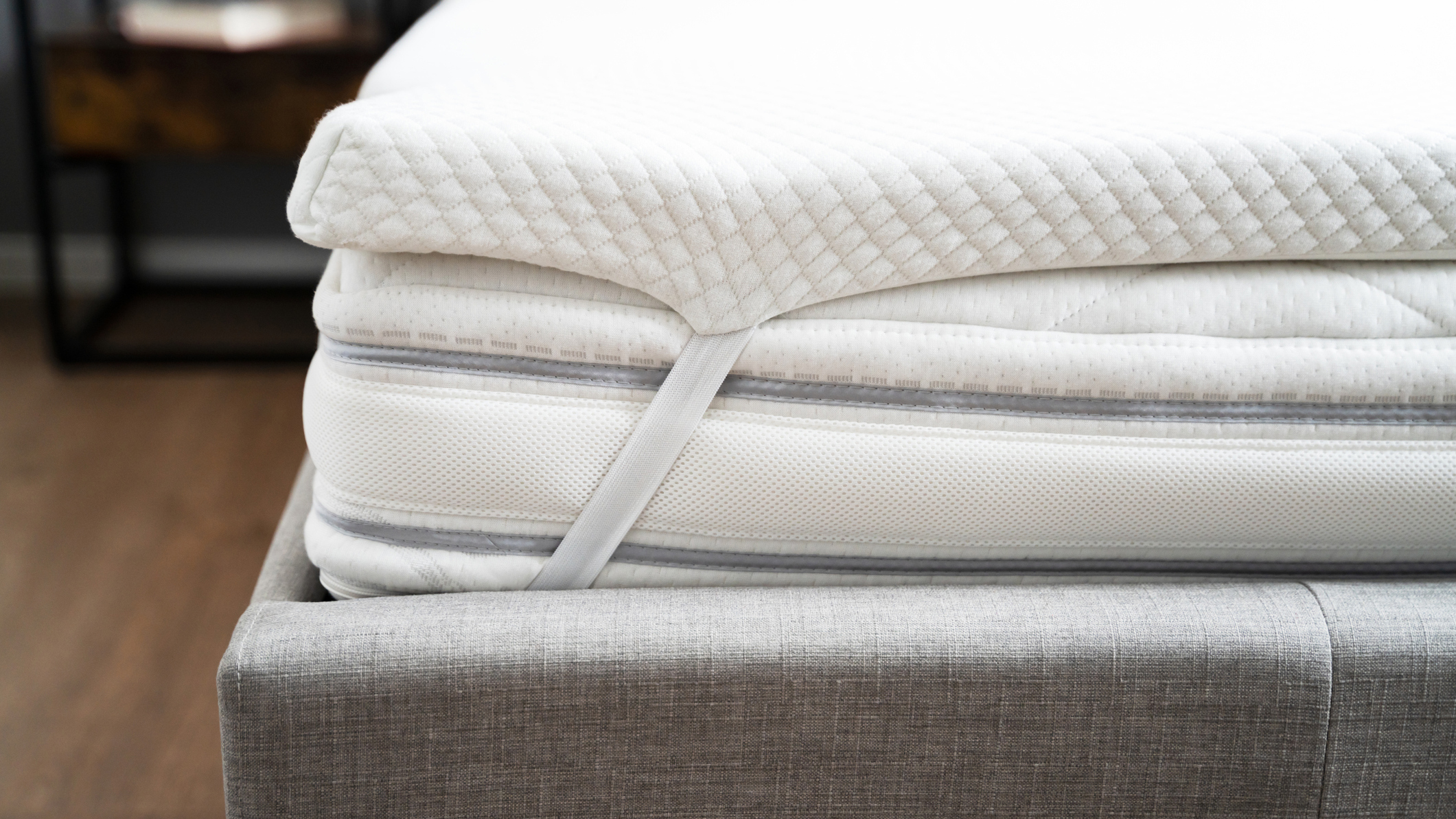If you’re wondering how often you should flip or rotate your mattress, the answer depends on the type of mattress you have. Bed design has improved greatly in the last several years, so while the common advice was to rotate or flip mattresses regularly to keep them in good shape, that isn’t the case for every single one.
As we explain in our best mattress guide, some spring or hybrid models shouldn’t be turned because the support layers (the harder-feeling layers) will then be on the top, so you’d find it too painful a surface to sleep on. Those designed with zoned support at the head or feet shouldn’t be rotated as you’ll have unsuitable support at the wrong end.
On the flipside, the majority of mattresses can and should be rotated regularly so that general wear and tear is evenly distributed, and so that the bed stays comfortable all-over for longer.
In this guide, we explain how often you should rotate your mattress, whether it’s suitable for flipping or not, and how to move it without damaging it (or your back).
How often should you rotate your mattress?
- Most should be rotated every three to six months
- Memory foam mattresses may require more regular rotation
- Not all beds with zoned support should be rotated

You should rotate your mattress every three months, though keep in mind that different brands have their own specific guidelines. Therefore we'd recommend reading their instructions before rotating or turning your mattress.
If you and your partner are significantly different heights and weights, get into the habit of rotating more frequently. This keeps the filling evenly distributed and prevents the mattress from dipping or sagging on one side.
Is the mattress in a guest bedroom and used occasionally? Then you don’t have to rotate it so often – once every six months should be enough.
As your mattress ages, it’s a good idea to flip or rotate it more often. If you’ve just bought a brand new mattress, you can probably leave rotating it slightly longer than every three months.
Sometimes, remembering to rotate your mattress is the biggest challenge. We suggest setting a reminder on your phone so that you don’t forget.
Why should you rotate your mattress?
- Rotating helps the mattress support you properly for longer
- It spreads out general wear and tear and reduces sagging
- Regular rotation also makes it more hygienic to sleep on
Assuming you sleep on your mattress most nights, without rotation your body weight will naturally cause the mattress to dip and sag in all the major pressure areas (head, shoulders, back and hips). In addition to sagging or dipping, this could eventually cause tearing in the mattress.
By rotating it you’ll help to keep the surface even. More importantly, you’ll be helping your mattress to support your body properly for longer.
Most major types of mattresses benefit from rotation. Memory foam, in particular, can be prone to sagging due to the design of the foam – as it ages, it doesn’t spring back into shape as quickly or readily.
Can all mattresses be rotated?
The short answer is no. Some are designed with zoned support, meaning that your lumbar zone won’t be in the right position if the mattress is rotated when it shouldn’t be.

Other mattresses are also available with specific customization, so that you can change certain areas of the mattress for different comfort levels. They too will need to be one-way at all times and therefore shouldn’t be flipped either.
Rotating or flipping these sorts of mattresses is a recipe for pain because you won’t get the right pressure relief where you need it. Trust us, it will also be extremely uncomfortable when facing the wrong way.
How to rotate a mattress: step by step guide
Follow these easy steps to make sure you rotate your mattress quickly and efficiently:
- Strip everything off the bed, including bedding, sheets and any mattress toppers, protectors, pads or electric blankets.
- Move objects off your bedside tables, including any bedside lamps. Broken bulbs won’t make the job any easier!
- If you’ve got a partner or friendly neighbor, make sure they help. Two hands are easier than one.
- If your mattress has handles, use these to shift the mattress without putting extra strain on the sides.
- Rotate in a quarter turn, take a short rest and then move to the front of the bed to do another quarter turn. And voila! The mattress will be turned 180 degrees.
How often should you flip your mattress?
- Mattresses with identical construction on both sides should be flipped
- Those with different firmnesses on each side should be flipped
- Don’t flip those designed with specific layers in a specific order
The truth is, most modern mattresses aren’t designed to be flipped. They are usually designed with specific layers that appear in a specific order, building up from a sturdy base layer through to a plush (cushioned) top layer. If you flip a mattress like this, you’ll damage the softer top layers and it would be far too uncomfortable to sleep on for long.
It’s usually made very clear with labelling which way up the mattress should go. If you’re unsure as to whether it can be flipped or not, check the brand’s website or your user guide for care tips.

That said, there are some mattresses that should be flipped. Traditional innerspring mattresses without a pillow top generally have identical construction on both sides and the coils will benefit from the mattress being flipped.
There are also those with a softer side and a firmer side, plus a support core in between to provide structure and stability. These are designed to be flipped for individual sleeping preference. You should flip your mattress every six months and rotate it at the same time.
Just because a modern mattress can’t be flipped, it doesn’t mean you won’t get proper support throughout its lifespan will help you decide on when to rotate. (read our how long does a mattress last feature for more). One-sided mattresses are specifically designed to give plenty of support, with the foundation layer keeping your posture aligned and providing a stable platform for sleep and rest.
How to care for your mattress
As well as rotating and flipping your mattress, if appropriate, there are a few other things that you can do to prolong its lifespan. If yours has a removable cover, make sure you machine wash it regularly.
If there’s no removable cover, we’d suggest buying a good quality mattress protector to help keep the bed clean and free from spills and stains. As your mattress ages, we’d recommend investing in the best mattress topper you can afford to add extra cushioning and support.
Buying the best pillow for your sleep position will also help prevent sagging at the head end of your bed.
Accidentally spilt something on your mattress or need to banish a stain? We’ve put together a comprehensive guide on how to clean a mattress - it has all the tips you’ll need for dealing with stains and spills.
Bear in mind that not all mattresses can be cleaned in the same way. Always check the label for specific instructions and, if you’re unsure, consult the brand’s website.
All mattresses benefit from a regular vacuum – for an extra clean, sprinkle baking soda over the surface, leave it for at least 30 minutes, then vacuum it up. Wash your bedding and mattress cover regularly at a temperature of at least 130℃ Fahrenheit (54C) to kill dust mites and remove allergens.
If you have read through this feature on how often should you flip or rotate your mattress and have decided that it’s time for an upgrade, read our guide to the best mattresses for all budgets.
We’ve also been rounding up the following mattress sales for the biggest offers:
- The best Simba mattress discounts and sales on hybrid beds
- The biggest Saatva mattress sales and deals live now
- Our guide to the best Nectar mattress sales and deals
from TechRadar - All the latest technology news https://ift.tt/3qcjgfZ
No comments:
Post a Comment